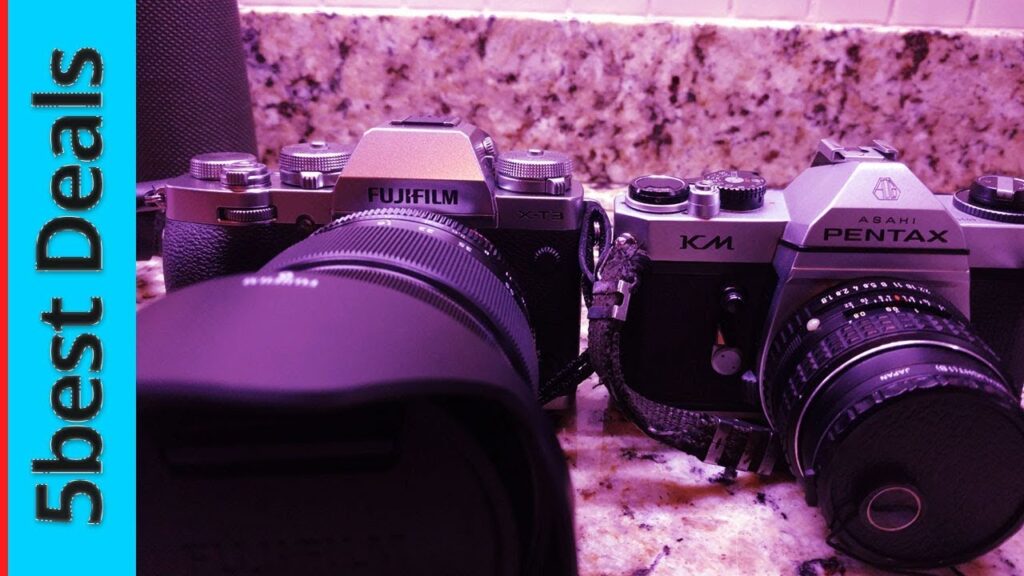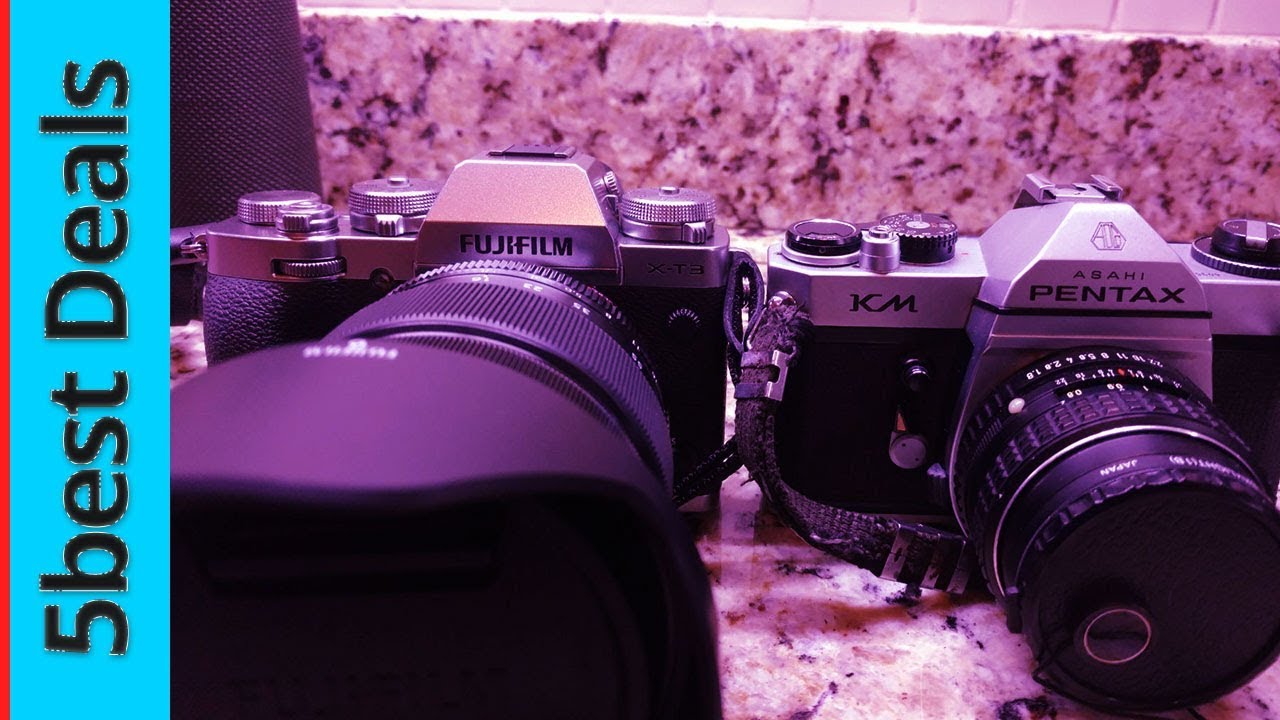Embark on your photographic journey with confidence by exploring the top digital cameras of 2023. This article showcases five exceptional models that stand out for their innovative features, impressive image quality, and user-friendly designs. It’s tailored to guide you through your decision-making process, making it easier to find the perfect camera for both novice and experienced photographers.
From the versatility of the Olympus OM-D EM10 Mark III to the high-resolution capabilities of the Nikon D850, each camera brings something unique to the table. Discover how these cameras cater to various photography needs, whether you’re looking to capture breathtaking landscapes or dynamic action shots. By the end of this guide, you’ll have a clearer picture of which camera best suits your style and requirements.
Choosing the Right Digital Camera for Your Needs
Choosing the perfect digital camera can feel like a daunting task, especially with the myriad options available. Whether you’re new to photography or looking to upgrade your current gear, understanding your specific needs and knowing what to look for can make the process much simpler.
Factors to Consider
When selecting a digital camera, consider factors such as your budget, the types of photography you enjoy, and how often you plan to use the camera. Maybe you’re interested in capturing stunning landscapes, snapping quick shots of your family, or diving into professional wildlife photography. Each of these scenarios might require different camera features. Additionally, think about the camera’s ease of use, portability, and the availability of accessories like lenses and tripods.
Types of Digital Cameras
There are several types of digital cameras to choose from:
-
DSLRs: These cameras are known for their versatility and image quality. They are a favorite among hobbyists and professionals alike.
-
Mirrorless Cameras: These are typically lighter and more compact than DSLRs. They offer excellent image quality and are gaining popularity due to their advanced features.
-
Point-and-Shoot: These are great for beginners or those who want a straightforward, compact camera for casual photography.
-
Action Cameras: Perfect for adventurers, these cameras are durable and can handle extreme conditions.
Understanding Camera Specifications
Understanding camera specifications is crucial to making an informed decision. Pay attention to specs like megapixels, sensor size, and image stabilization. Knowing what each specification means and how it impacts performance will help you choose a camera that suits your needs.
Importance of Image Quality
image quality is one of the most critical factors in photography. It determines how detailed and vibrant your photos will be.
Resolution and Megapixels
Megapixels (MP) indicate the resolution of a camera. Higher megapixels mean more detail, which is essential for large prints or cropping images without losing quality. However, more megapixels do not always equate to better photos; sensor size and quality also play a significant role.
Sensor Size and Type
The sensor is the heart of a camera. Larger sensors generally produce better image quality, especially in low light conditions. Common sensor sizes include Full-Frame, APS-C, and Micro Four Thirds. The type of sensor, such as CMOS or CCD, also affects the camera’s performance, with CMOS being more common in modern cameras due to its faster processing speed and energy efficiency.
Image Processing Engines
The image processing engine is like the camera’s brain. It processes the data captured by the sensor and affects factors like image noise, color reproduction, and shooting speed. A good image processing engine ensures crisp, clear images even in challenging conditions.
Lens Compatibility
Lenses significantly impact the versatility and quality of your photography. Understanding lens compatibility is essential when choosing a camera.
Interchangeable Lenses
DSLRs and mirrorless cameras often support interchangeable lenses, giving you the flexibility to choose from a variety of lenses to suit different photography styles. This can range from wide-angle lenses for landscapes to telephoto lenses for wildlife photography.
Fixed Lens Options
Point-and-shoot and action cameras usually come with fixed lenses. While this limits flexibility, these cameras are designed for ease of use and portability. They are ideal for quick shots and travel photography where simplicity is key.
Lens Quality and Brands
Not all lenses are created equal. Lens quality can significantly affect image sharpness, contrast, and overall look. Renowned brands like Canon, Nikon, Sony, and Fujifilm offer high-quality lenses, often considered benchmarks in the industry. Investing in a good lens can greatly enhance your camera’s performance.

This image is property of i.ytimg.com.
Key Features to Look For
In addition to basic specs, several key features can enhance your photography experience.
Autofocus Systems
A robust autofocus system is crucial for capturing sharp images, especially in fast-moving situations. Look for cameras with features like phase detection and multiple focus points for improved speed and accuracy.
Burst Shooting Speed
Burst shooting speed, measured in frames per second (FPS), is essential for action photography. A higher FPS allows you to capture multiple images in quick succession, ensuring you don’t miss any critical moments.
Image Stabilization
Image stabilization helps reduce blur caused by camera shake, especially in low light or when using long lenses. This feature is available in various forms, including optical and in-body stabilization, and is a must-have for crisp, clear photos.
Video Recording Capabilities
If you’re interested in capturing videos, consider the camera’s video recording capabilities.
Video Resolution (4K, FHD)
Video resolution is critical for capturing high-quality footage. 4K resolution offers superior detail compared to Full HD (FHD), making it ideal for cinematic projects. However, FHD is still excellent for everyday recording and uses less storage.
Frame Rates
Higher frame rates (e.g., 60fps, 120fps) allow for smoother motion and slow-motion effects. These are particularly useful for action sequences or creative video projects.
Additional Video Features
Additional features like external microphone inputs, headphone jacks, and various shooting modes can enhance your video recording experience, providing better audio quality and more creative control.
Olympus OM-D E-M10 Mark III
Design and Build Quality
The Olympus OM-D E-M10 Mark III features a compact and lightweight design, making it perfect for travel and everyday use. Its retro aesthetic appeals to both beginners and experienced photographers who appreciate classic camera designs.
Performance Overview
Performance-wise, the E-M10 Mark III impresses with an 8.6 FPS burst shooting speed and a five-axis image stabilization system. Its 16 MP sensor delivers sharp, vibrant images, while the TruePic VIII image processing engine ensures fast and reliable performance.
Pros and Cons
Pros:
- Compact and portable
- Excellent image stabilization
- Easy to use
Cons:
- Limited battery life
- Smaller sensor compared to competitors
Who Should Buy This Camera?
This camera is ideal for hobbyists and travel photographers looking for a versatile, easy-to-carry camera with great features and image quality.
Sony Alpha A7R III
Design and Build Quality
The Sony Alpha A7R III boasts a robust design with weather sealing, making it suitable for various shooting conditions. Its ergonomic grip and intuitive controls ensure comfortable handling, even during extended shooting sessions.
Performance Overview
Powered by a full-frame 42.4 MP sensor and an advanced autofocus system, the A7R III delivers stunning image quality and impressive performance. Its 10 FPS burst shooting speed and 4K video capabilities make it a versatile tool for both photographers and videographers.
Pros and Cons
Pros:
- Exceptional image quality
- High-resolution sensor
- Fast and reliable autofocus
Cons:
- Expensive
- Complex menu system
Who Should Buy This Camera?
The Sony A7R III is perfect for professional photographers and serious hobbyists who demand high resolution and superior performance in a durable, full-frame camera.
Nikon D3500
Design and Build Quality
The Nikon D3500 features a simple and lightweight design, making it a great option for beginners. Its easy-to-use interface and robust build ensure durability, while its lightweight nature means you can carry it around without hassle.
Performance Overview
With a 24.2 MP sensor and a reliable autofocus system, the D3500 delivers excellent image quality for an entry-level DSLR. Its 5 FPS burst shooting speed and Full HD video recording capabilities make it versatile enough for various photography needs.
Pros and Cons
Pros:
- Affordable
- Excellent battery life
- User-friendly interface
Cons:
- Limited advanced features
- No 4K video
Who Should Buy This Camera?
The Nikon D3500 is ideal for beginner photographers looking for an affordable, easy-to-use DSLR that delivers great image quality and versatility.
Fujifilm X-T3
Design and Build Quality
The Fujifilm X-T3 offers a stylish retro design with robust construction. It’s weather-sealed to protect against dust and moisture, making it a reliable choice for outdoor photography.
Performance Overview
With a 26.1 MP sensor and advanced X-Processor 4, the X-T3 excels in both image and video quality. Its fast autofocus system, 11 FPS burst shooting speed, and 4K video capabilities make it a powerful tool for a range of photographic and video projects.
Pros and Cons
Pros:
- Excellent image and video quality
- Fast and responsive performance
- Beautiful design
Cons:
- No in-body stabilization
- Complex controls for beginners
Who Should Buy This Camera?
The Fujifilm X-T3 is perfect for enthusiast photographers and videographers who appreciate high performance, excellent image quality, and a stylish design.
Conclusion
Summary of Top Picks
Each camera reviewed offers unique strengths and caters to different types of users. From the compact and versatile Olympus OM-D E-M10 Mark III to the high-performance Sony Alpha A7R III, there’s a camera for every need and budget.
Final Recommendations
For beginners, the Nikon D3500 offers great value and ease of use. Enthusiast photographers might prefer the Fujifilm X-T3 for its image quality and stylish design. Professionals seeking top-tier performance should consider the Sony Alpha A7R III.
Future Trends in Digital Camera Technology
Looking ahead, we can expect advancements in sensor technology, AI-powered autofocus systems, and improved video capabilities. As smartphones continue to influence camera technology, we might also see more user-friendly features and enhanced connectivity options in future digital cameras. Whether you’re a novice or a seasoned pro, staying informed about these trends will help you make the best choice for your photography journey.

